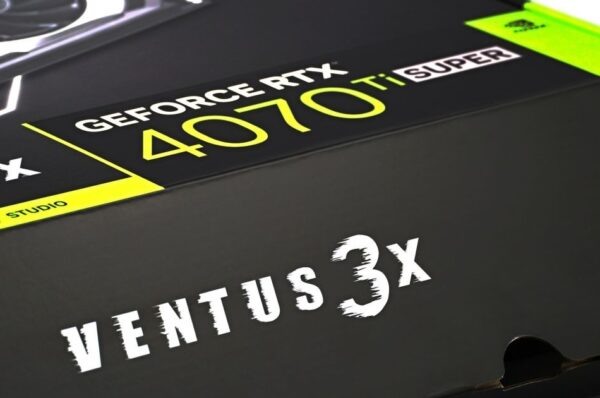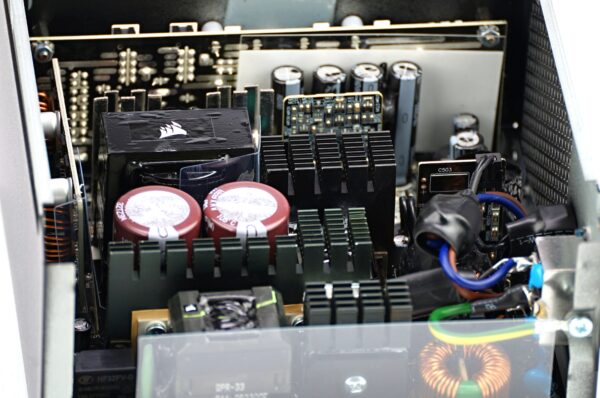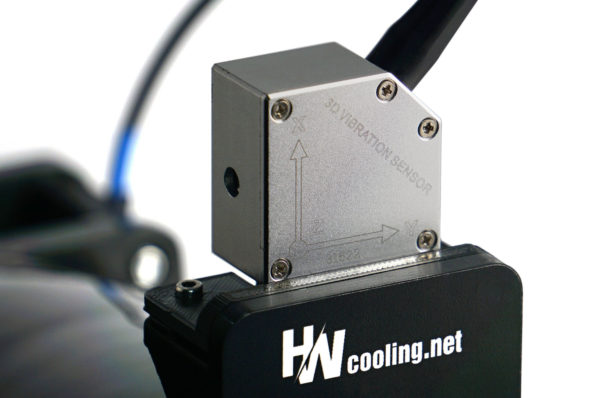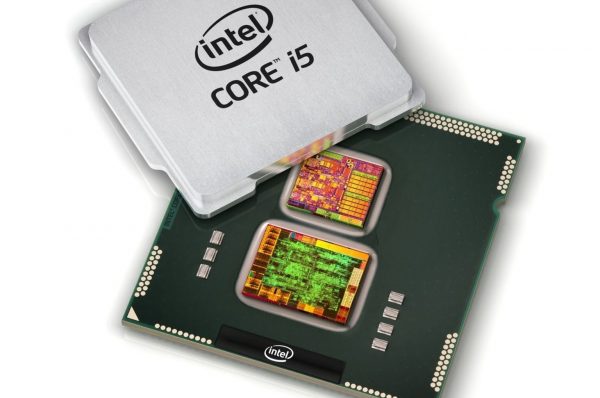It’s roughly two weeks until AMD releases processors with the new Zen 5 architecture. This week, we finally got proper details on these CPUs’ architecture, which AMD revealed at the Tech Day event. So, we can now break down the changes the company has made to the core, compared to Zen 4 – and they’re pretty extensive, probably more so than they seemed in June. And AMD also reiterated its promise of a 16% increase in IPC for these CPUs. Read more “Zen 5: AMD’s most innovative core since the original Zen [analysis]”
Category: Analysis
Noctua on NF-A14x25 G2 frame deformations (interview)
One of the last reasons for delaying the new generation of 140mm LCP fans was complications around potential excessive frame deformation. But to ensure that users never have to deal with this type of difficulty in practice, Noctua has intervened in the fan prototypes once more. You can find out how, why exactly in that way, and what the satisfaction with the result has been like directly from Noctua, who we asked a few questions on the subject. Read more “Noctua on NF-A14x25 G2 frame deformations (interview)”
Zen 5 tested: Mobile core differs considerably from desktop one
Next month, AMD will begin selling both mobile Ryzen AI 300 “Strix Point” processors with Zen 5 architecture and desktop Ryzen 9000 with this new core. AMD only said vague things about the core at Computex, mentioning a 16% increase in IPC (for selected programs, of course), but now a test of a an actual specimen has appeared on the internet, revealing more about the Zen 5 architecture. And it’s very interesting stuff. Read more “Zen 5 tested: Mobile core differs considerably from desktop one”
Oryon, the Nuvia ARM core of Snapdragon X: Architecture analysis
At Computex 2024, Intel introduced the new Lion Cove and Skymont architectures, which we covered in detail. AMD also shared a peek at their competing Zen 5 core, but with little detail, so we’ll have to wait with our analysis of the architecture. But there’s a new ARM-based challenger entering the fray – the Snapdragon X Elite currently coming to laptops. And Qualcomm has now also finally teased its “Nuvia” Oryon architecture. Read more “Oryon, the Nuvia ARM core of Snapdragon X: Architecture analysis”
Intel Lunar Lake: The most efficient x86 processor detailed
Intel has unveiled the Lunar Lake processors at Computex, said to be the most mobility and efficient CPUs (allegedly the best in the x86 world) and compete against Apple chips as well as against other ARM processors in Copilot+ PCs, in addition to facing AMD. And it’s much more than just the P-Core and E-Core architectures, Lunar Lake basically combines the best technologies Intel has to across various fields into a single package. Read more “Intel Lunar Lake: The most efficient x86 processor detailed”
Skymont architecture analysed: Intel little core outgrows the big?
Intel unveiled their next-gen Lunar Lake mobile processor at Computex 2024. It will power Copilot+ PCs with its NPU and is supposed to be very power efficient, but it’s extremely interesting mainly because of the new CPU architectures, which will power future Arrow Lake desktop CPUs. Ironically, the star of this generation might actually be the little efficient E-Core accompanying the big P-Cores. Its architecture seems to have taken a giant leap. Read more “Skymont architecture analysed: Intel little core outgrows the big?”
Intel’s new P-Core: Lion Cove is the biggest change since Nehalem
Intel revealed its next-gen Lunar Lake mobile processor at Computex 2024, to be released this summer. It will power Copilot+ PCs with its fast NPU and is supposed to be highly power efficient, but it’s also extremely interesting because its new CPU architectures are also coming to future Arrow Lake desktop CPUs. First up, we’ll take a look at the big P-Core architecture, which represents the biggest changes in many years. Read more “Intel’s new P-Core: Lion Cove is the biggest change since Nehalem”
MSI officially about RTX 4070 Ti Super 16G Ventus 3X faults
MSI has released a statement saying that the RTX 4070 Ti Ventus 3X graphics cards did indeed come out with an untweaked BIOS that prevents this graphics card from achieving its maximum performance. However, there seems to be a fix already that could solve everything. Still… let’s revisit this topic and try to sort through the possible technical reasons that cause the significant fluctuation in the performance of the cheapest three-fan MSI RTX 4070 Ti Super. Read more “MSI officially about RTX 4070 Ti Super 16G Ventus 3X faults”
How we measured computer PSUs. The acoustic part
The PSU tests, which will be published shortly, will also include a detailed noise analysis. Each model has a different fan, a different grille in front of it, and operates at a different speed under the same loads, all of which shapes the different noise character. In order to make everything clear and accurate, spectral analysis of the sound is essential. This tells us which frequencies are noisier and how each PSU actually “sounds”. Read more “How we measured computer PSUs. The acoustic part”
How we measured computer PSUs. The electrical part
The time has come to introduce the testing methodology for computer PSUs. We will divide this into two articles, where the first will cover procedures for obtaining key electrical quantities (i.e. surrounding efficiency, voltage regulation, voltage ripple, etc.). A separate sequel will then focus on the analysis of acoustic profiles. But now on to the purpose for which we travelled to the external testlab. Read more “How we measured computer PSUs. The electrical part”
Why ATX 3.0? Features and advantages of the new PSU standard
We are currently working on a series of power supply tests, from which you already saw a preview with thermal imagery and temperature measurements of the 12pin (a.k.a. 12+4pin) 12VHPWR cables. In this article we will look at what the PSUs produced using this standard have to offer. Even older good quality PSUs can last a long time in several generations of your PC, so what in the ATX 3.0 specification makes it worth switching over? Read more “Why ATX 3.0? Features and advantages of the new PSU standard”
What does GeForce RTX accelerate in DaVinci Resolve Studio 18?
DaVinci Resolve (Studio) video editing applications are highly optimized for hardware acceleration by GeForce RTX graphics cards. These can dramatically reduce the time of some tasks, turning hours into minutes or, for larger projects, days into hours. We’ll take a look at what exactly this is about in a two-part miniseries dedicated to streamlining work in Black Magic Studio video editors with NVIDIA Ada Lovelace GPUs. Read more “What does GeForce RTX accelerate in DaVinci Resolve Studio 18?”
Why want a GeForce RTX 4000? Nvidia DLSS 3.5 technology analysis
In this article, we’ll take a look at some of the exclusive technologies that Nvidia GeForce RTX 4000 generation graphics cards can provide. We are going to explain the most significant new features currently supported by the GeForce graphics card ecosystem and perform tests showing how they affect performance in Cyberpunk 2077 with the new Phantom Liberty expansion. And we’ll also take a look at what they’re doing to image quality. Read more “Why want a GeForce RTX 4000? Nvidia DLSS 3.5 technology analysis”
Analysis: The main reasons why fans vibrate
We pay close attention to fan vibration in our tests, as it clearly indicates the mechanical qualities of the design. However, it is always good to have an idea why some fans vibrate more, others less, some not at all. And we will deal with this in more detail in this article, which is based on our own experience, but also on notes from fan developers. Can a cheap fan reach high speeds without vibration? Read more “Analysis: The main reasons why fans vibrate”
AVX10 seeks to replace AVX-512, will work on big.LITTLE CPUs
Yesterday we reported that x86 processors – at least those from Intel – will get Advanced Performance Extensions (APX), a major change in the programming of these CPUs. But Intel is also planning big changes to SIMD instructions with AVX10 technology, which will unify vector extensions whose subsets are now a mess, and should also address the problem of big.LITTLE processors. But this may in turn kill the true 512-bit SIMD capability of AVX-512. Read more “AVX10 seeks to replace AVX-512, will work on big.LITTLE CPUs”






















Latest comments